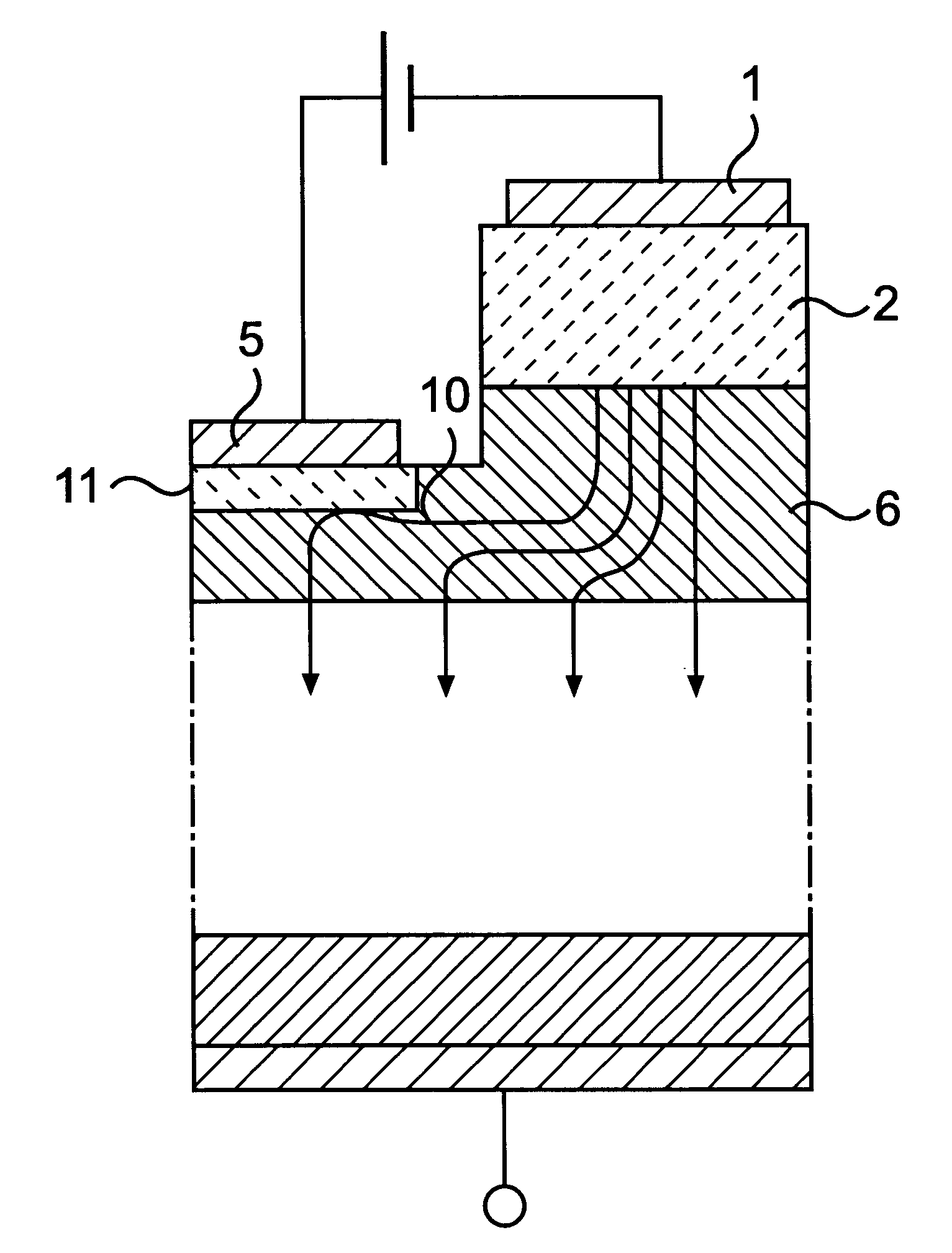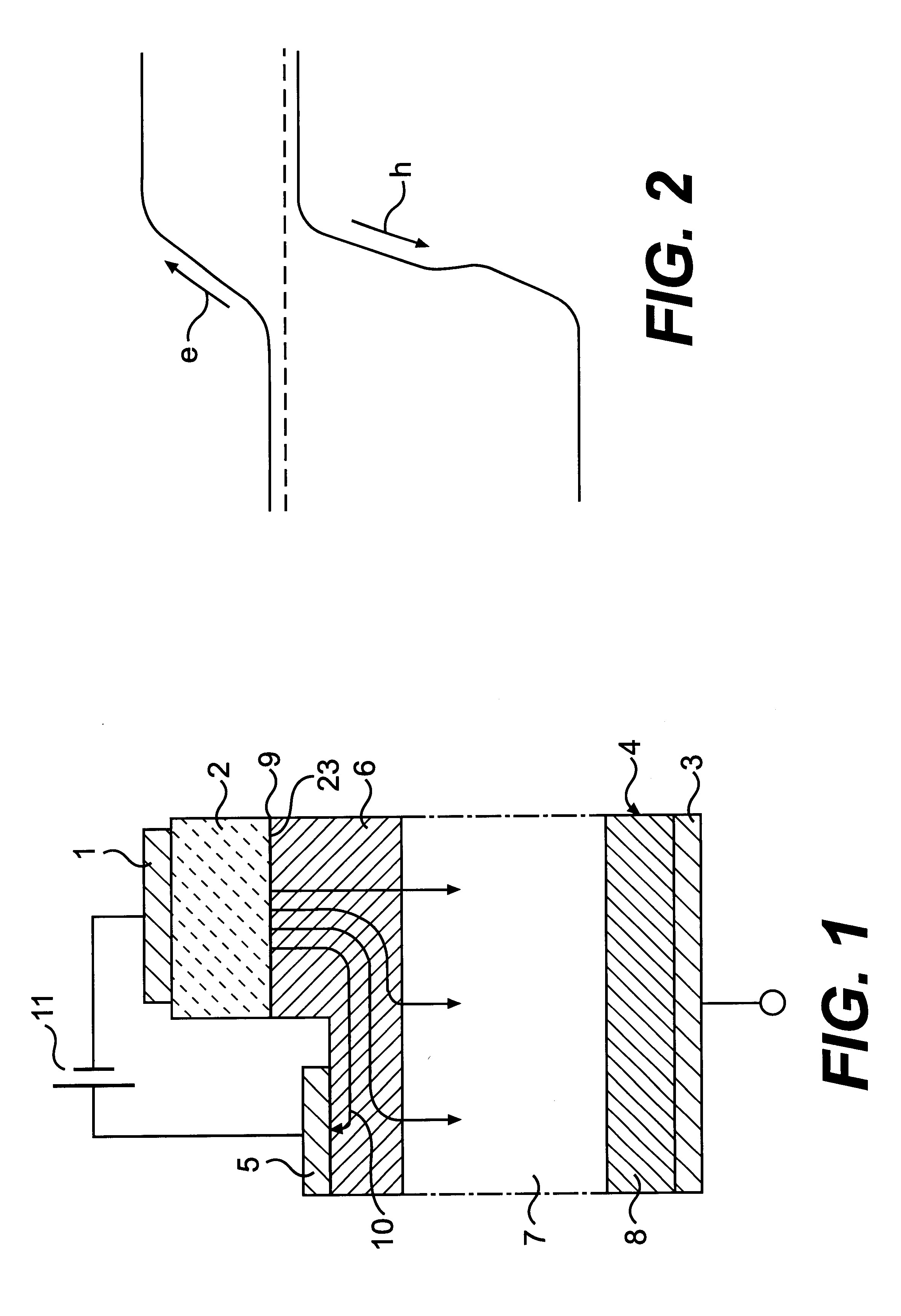Bipolar transistor having a low doped drift layer of crystalline SiC
a crystalline sic, low-drift layer technology, applied in the direction of transistors, electrical devices, semiconductor devices, etc., can solve the problems of low emitter injection efficiency, high control current that must be supplied to the contact for the base of the transistor, and thin base layer suffer from punch-through breakdown
- Summary
- Abstract
- Description
- Claims
- Application Information
AI Technical Summary
Benefits of technology
Problems solved by technology
Method used
Image
Examples
Embodiment Construction
A Heterojunction Bipolar Transistor made of SiC, for instance of the 4H-polytype, is schematically illustrated in FIG. 1. However, it should be noticed that the relative dimensions of the regions in this device shown in this figure and also in the other figures have only been chosen for the sake of clearness of the drawing.
This transistor has three electrodes, namely one electrode 1 making contact to an emitter 2, an electrode 3 making contact to a collector 4 and an electrode 5 making contact to a base 6. The emitter 2 is doped according to a first conductivity type, and this first conductivity type will hereinafter be considered to be n-type throughout the description, but it is emphasized that it will be possible to exchange the conductivity types of all layers in all different embodiments to the opposite. In obtaining numerical values shown in FIGS. 5 and 7 following typical values of dopings and layer thicknesses were used for the sake of illustration. The doping concentration ...
PUM
 Login to View More
Login to View More Abstract
Description
Claims
Application Information
 Login to View More
Login to View More - R&D
- Intellectual Property
- Life Sciences
- Materials
- Tech Scout
- Unparalleled Data Quality
- Higher Quality Content
- 60% Fewer Hallucinations
Browse by: Latest US Patents, China's latest patents, Technical Efficacy Thesaurus, Application Domain, Technology Topic, Popular Technical Reports.
© 2025 PatSnap. All rights reserved.Legal|Privacy policy|Modern Slavery Act Transparency Statement|Sitemap|About US| Contact US: help@patsnap.com



